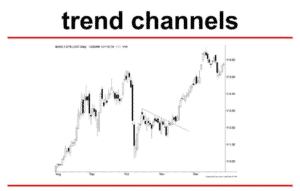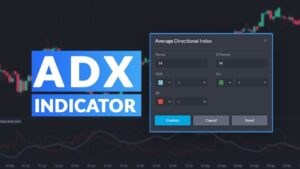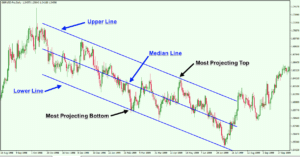The fast-paced world of forex trading demands constant vigilance and the ability to react quickly to changing market conditions. Technical indicators play a crucial role in this endeavor, helping traders identify trends, gauge momentum, and make informed trading decisions. However, a common challenge with many technical indicators, particularly moving averages (MAs), is lag. Since they calculate an average price over a past period, they inherently react slowly to current price movements. This lag can be detrimental in forex trading, where even small price changes can have significant consequences.
The Zero Lag Hull Moving Average (ZLHMA) emerges as a potential solution to this challenge. Building upon the foundation of the Hull Moving Average (HMA), the ZLHMA strives to minimize lag while providing a smoother, more responsive representation of price trends in the forex market.
Demystifying the Hull Moving Average (HMA)
Developed by Alan Hull, the HMA is a technical indicator specifically designed to address the lag issue prevalent in traditional MAs like the simple moving average (SMA). Unlike the SMA, which simply averages prices over a defined period, the HMA employs a more intricate calculation involving multiple weighted moving averages (WMAs).
Here’s a breakdown of the HMA calculation for better understanding:
- Calculate two WMAs:
- WMA with a period of (length / 2), multiplied by 2.
- WMA with a period of length.
- Subtract the second WMA from the first WMA.
- Calculate a third WMA using the square root of the length as the period and the result from step 2 as the input.
This three-step process incorporates data from various timeframes, resulting in an HMA that reacts faster to price changes compared to a traditional SMA while maintaining a degree of smoothness.
The Quest for Zero Lag: Unveiling the ZLHMA
The concept of a “zero lag” indicator might seem like a utopian ideal in technical analysis. After all, any calculation requires some processing time, introducing a minute delay. However, the ZLHMA aims to minimize this lag as much as possible, making it a valuable tool for forex traders seeking a more responsive moving average.
There isn’t a universally accepted formula for the ZLHMA. Different variations exist, with some modifying the HMA calculation itself and others employing additional smoothing techniques.
Here are some approaches commonly used to achieve a ZLHMA in forex trading:
- Modified HMA Calculation: Some variations adjust the weights assigned to the WMAs used in the HMA calculation. This can involve experimenting with different weighting schemes to achieve a faster response specifically suited for the forex market.
- Double Smoothing: This technique involves applying the HMA calculation twice. The first HMA is calculated using the raw price data. Then, a second HMA is calculated using the first HMA as the input. This double smoothing can potentially reduce lag further but might also introduce additional noise to the indicator, especially in volatile forex markets.
It’s important to remember that achieving true “zero lag” is practically impossible. The ZLHMA focuses on minimizing the lag as much as possible while maintaining some level of smoothness for effective analysis in forex trading.
The ZLHMA in Action: Applications and Considerations for Forex Traders
Forex traders can utilize the ZLHMA in various ways to enhance their technical analysis:
- Identifying Early Trends: The ZLHMA’s responsiveness allows for quicker detection of trend changes compared to traditional MAs. This can be particularly beneficial in forex trading, where capturing early entries and exits in trending markets can lead to significant gains.
- Dynamic Support and Resistance: Similar to other MAs, the ZLHMA can act as dynamic support or resistance levels. Price fluctuations around the ZLHMA can indicate potential buying or selling opportunities in the forex market.
- Confirmation with Other Indicators: The ZLHMA should be used in conjunction with other technical indicators and analysis methods specific to forex trading. Combining the ZLHMA with oscillators or volume analysis can provide a more comprehensive understanding of market sentiment and potential trend continuation or reversal.
While the ZLHMA offers advantages for forex traders, some considerations should be kept in mind:
- Increased Noise: By attempting to reduce lag, the ZLHMA might become more sensitive to short-term price fluctuations, potentially generating more noise on the chart. This can be particularly true for shorter ZLHMA periods, making them less suitable for highly volatile forex pairs.
- False Signals: The increased responsiveness can lead to more frequent signals, some of which might turn out to be false positives. Combining the ZLHMA with other confirmation techniques like candlestick patterns or price action analysis can help mitigate this issue in forex trading.
- Backtesting is Crucial: As with any technical indicator, backtesting the ZLHMA on historical forex data is essential. This helps assess its effectiveness for specific currency pairs and identify potential limitations in different market conditions.
Here are some additional tips for forex traders to leverage the ZLHMA effectively:
- Experiment with Length: The length (period) of the ZLHMA can be adjusted to find a balance between responsiveness and smoothness that suits your trading style and the chosen forex pair. Generally, a shorter period will be more reactive but potentially noisier, while a longer period will be smoother but potentially lag more in capturing rapid forex price movements.
- Market Volatility Matters: The effectiveness of the ZLHMA can vary depending on the volatility of the forex pair being traded. In highly volatile markets, a shorter ZLHMA might be more appropriate to capture rapid price movements. In calmer markets with a major forex pair, a longer ZLHMA might provide a clearer trend indication.
- Beware of Over-optimization: While backtesting is crucial, avoid over-optimizing the ZLHMA parameters to fit historical forex data perfectly. Such an approach might not translate well to future market behavior and could lead to false signals.
By understanding the ZLHMA’s strengths and limitations, and by implementing it strategically within a broader technical analysis framework tailored for forex trading, traders can leverage its responsiveness to navigate fast-moving currency markets and potentially enhance their trading decisions.
Beyond the ZLHMA: Exploring Additional Tools for Forex Traders
The world of forex technical analysis is constantly evolving, with new indicators and techniques emerging all the time. While the ZLHMA represents a step forward in addressing the lag issue inherent in traditional MAs, it’s just one piece of the puzzle. Forex traders can benefit from exploring other responsive moving average indicators like the Double Exponential Moving Average (DEMA) and comparing their performance on different currency pairs.
Here are some additional resources for forex traders interested in expanding their technical analysis toolbox:
- Advanced Moving Average Techniques: Explore resources on various moving average variations specifically designed for forex trading. These variations can incorporate additional factors like volatility or volume to provide a more nuanced picture of price trends.
- Volatility Indicators: Incorporating volatility indicators like the Average True Range (ATR) can help forex traders gauge market conditions and adjust the ZLHMA length or choose a more suitable responsive indicator based on the current volatility level.
- Price Action Analysis: Mastering price action analysis techniques like candlestick patterns and support and resistance can provide valuable confirmation signals when used alongside the ZLHMA in forex trading.
Remember, successful forex trading requires a combination of technical analysis, fundamental understanding of global economic factors that influence currency valuations, and proper risk management. The ZLHMA can be a powerful tool for identifying trends and potential entry/exit points, but it should be used in conjunction with a well-rounded trading strategy specifically designed for the dynamics of the forex market.
Let’s Manage Your Forex Funds With Fx Pips Guru!
Fx Pips Guru is a forex fund management company managing client’s funds based on monthly profit share. Let’s do Live Chat with our experts.




